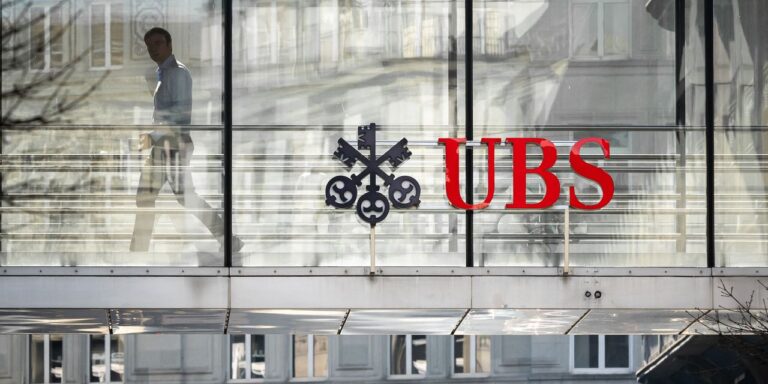
[ad_1]
Text size

Credit Suisse Group has agreed to be taken over by rival Swiss bank UBS Group.
Fabrice Coffrini/AFP/Getty Images
For a while, the most likely outcome for stock markets in 2023 was a trading range. Now, much worse scenarios are on the table.
This past week, the Dow Jones Industrial Average gained 376 points, or 1.2%, the
S&P 500 index
finished up 1.4%, and the
Nasdaq Composite
rose 1.7%. All three fell about 1% after the Federal Reserve raised rates a quarter point on Wednesday.
The go-nowhere action of the market over the past few days—despite some significant events, such as Fed speeches and
Credit Suisse Group
(ticker: CS) agreeing to be taken over by rival
UBS Group
(UBS)—is emblematic of recent trading. The S&P has bounced between 3700 and 4200 for the past few months.
Investors just can’t get excited about stocks with the economy slowing, interest rates rising, inflation persistent, and earnings estimates bleeding lower. All that, combined with a series of rolling crises—the popping of the crypto bubble and the recent regional bank failures—have kept a lid on big gains, says Wolfe Research Chief Investment Strategist Chris Senyek.
Even if investors could get motivated by slowing inflation and a potential end to the Fed’s cycle of rate hikes, more potential crises loom. On Senyek’s watch list are commercial real estate and private equity, both leveraged bets in a rising-rate environment. “Best case, we’re in a trading range, worst case, the floor falls out,” he says.
Nor is the current crisis going away. It won’t reach the levels of 2008 and 2009, when banks blew up because they had too much leverage and owned too many esoteric—and toxic—financial products. But the current issues can linger all the same. “Debt and liquidity crises don’t end in two weeks,” says Que Nguyen, Research Affiliates, chief investment officer for equities. “It’s really a crisis of the Fed’s making.”
How so? Short-term interest rates are now above long-term rates, which is a disaster for smaller banks that borrow at short-term rates and earn returns farther out on the rate curve, explains Ironsides Macroeconomics founder Barry Knapp. Of course, they could have used interest rate swaps and other methods of “maturity transformation,” but that’s a little too arcane for some U.S. banks. “They’re just small country banks,” says Knapp, who also worries that the stock market could be headed for a fall. “They’re not going to have a big interest-rate-swap book.”
Brian Rauscher, head of global portfolio strategy at Fundstrat, isn’t worried about the bottom falling out, but he, too, can’t get excited about the stock market. “It has been a bunch of single cockroaches,” he says of the current problems. None, however, are “end-of-the-world bearish.”
The mood, in other words, is grim, and four strategists offer similar advice: Stay defensive. Hold a little more cash. Stick to quality stocks—those with solid balance sheets and growth that doesn’t depend on the larger economy. Small-cap stocks are cheaper than usual after dropping 18% in the past 12 months, but investors should avoid small-cap bank stocks. Most of all, don’t get too excited about the next rally on Wall Street.
Stocks “can go sideways for long periods of time,” Rauscher says. “Go sideways, go down—the one thing I just didn’t mention was going up.” Nor should he have.
Write to Al Root at [email protected]
[ad_2]